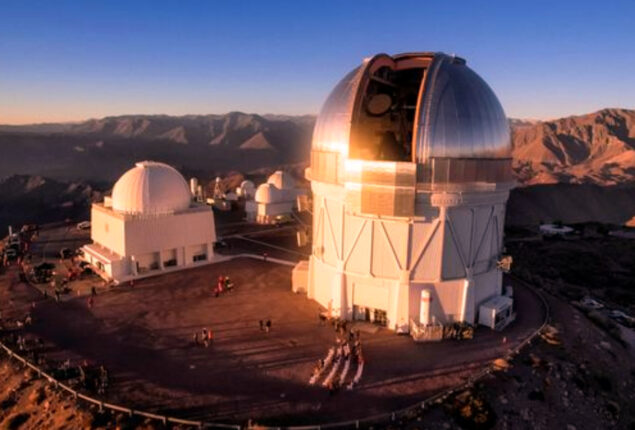Viral Video: Lioness Attacks Calf, Mother Buffalo Rescues. Watch
Lions are known to eat buffalo as one of their favourite foods....

Read viral: Researchers discover “planet killer” asteroid in Sun’s glare
Scientists have uncovered what may be a “planet killer,” the largest Potentially Hazardous Asteroid to be found in the Sun’s glare in nearly ten years.
Just last month, NASA smashed a spacecraft into a much smaller asteroid seven million miles away, shifting its orbit, so the discovery of the 1.5 km wide space rock is timely.
Three new near-Earth asteroids (NEAs) were discovered by an international team using the Dark Energy Camera (DECam) on the Vctor M. Blanco 4-metre Telescope at the Cerro Tololo Inter-American Observatory in Chile, part of the National Science Foundation’s NOIRLab.
The brightness of the Sun makes observation here particularly difficult for asteroid hunters.
Scientists discovered three new extrasolar planets by taking advantage of the brief but favourable observing conditions during twilight.
These near-Earth asteroids (NEAs) are a part of a mysterious population that hides between the orbits of Earth and Venus.
The largest known asteroid, designated 2022 AP7, has an orbit that could bring it close to Earth in the distant future.
Two additional asteroids, 2021 LJ4 and 2021 PH27, both have orbits that stay well outside of Earth’s orbit.
Since 2021 PH27 is the nearest known asteroid to the Sun, it is also of great interest to astronomers and astrophysicists.
As a result, it generates the highest general-relativity effects of any object in our Solar System, and its surface heats up to temperatures high enough to melt lead.
An astronomer from the Carnegie Institution for Science’s Earth and Planets Laboratory, Scott S. Sheppard, explains the work: “The region between the orbits of Earth and Venus is currently being surveyed by our twilight mission.
“Two large near-Earth asteroids, each about a kilometre across, have been discovered. These are so large that they are considered potential planet killers.
“Only a handful of NEAs of comparable size remain to be discovered, and these massive, as-yet-undiscoverable asteroids probably follow orbits that keep them inside the orbits of Earth and Venus for the vast majority of their lifetimes.
Due to the difficulty of observation near the glare of the Sun, only about 25 asteroids with orbits completely within Earth’s orbit have been discovered to date.
Catch all the Sci-Tech News, Trending News, Viral News, Breaking News Event and Latest News Updates on The BOL News
Download The BOL News App to get the Daily News Update & Follow us on Google News.